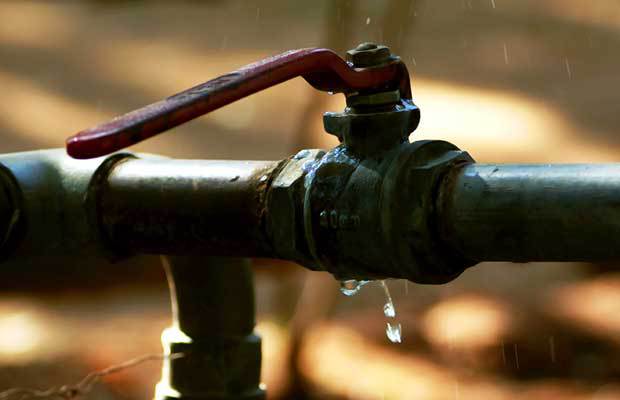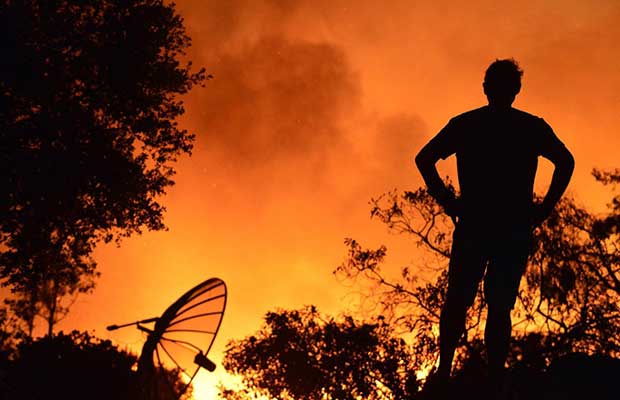
Knowing how to build the perfect campfire is one of the main ingredients of a successful camping trip and of survival in general. The campfire is at the apex of any backwoods gatherings. You will most likely need it to prepare food, keep warm, ward off predators, and maybe even purify drinking water, as well as to just create that ambiance for the bringing people together. In case you have never built one before, or you are an old hand at it, everything can be a bit more involved than it appears on the surface. A “must have” skill for ALL preppers, you may find some valuable takeaways in this article, especially if your wood is poorly seasoned or the prevailing weather conditions are all working against you.
The key to success in building the perfect campfire is to have the right supplies, skills and patience. You must also have in the back of your mind what you will need the fire for so you can start and maintain the perfect campfire (given Mother Natures changing moods.)
WHAT YOU WILL NEED
Tinder: These are the tiniest of fire igniting materials. Examples include wadded newspaper, wood shavings, cardboard, wax, commercial fire sticks and dryer lint.
Kindling: It is consider just tinder that is bulkier and more substantial. Good examples are twigs about the thickness of a pencil.
Firewood: Well seasoned firewood somewhere up to 5 inches in diameter. You should split larger-diameter logs to make them easier to handle and burn more efficiently, however that also means they are consumed faster.
A Fire-starter: While you can use matches, lighters tend to do better jobs in the wilderness. A flint rod may also do for camping fires as well as a number of methods you have seen on this site in the past. Add fire-starters that you are experienced with at your discretion as these may be better saved for use when your tinder is wet or green.
A Shovel or Spade: A shovel or small spade may be necessary if you will need to create a fire pit from scratch. Also handy for extinguishing a fire as well as leaving as little trace of your passing as possible.
STEPS TO FOLLOW TO BUILD A PERFECT CAMPFIRE
Step 1: Check If Campfires Are Permitted if You Are Simply Camping
Before lighting any fires, you must determine whether campfires are permitted in your camping area. Look for posted signs in the campsite warning against starting fires. You can also ask the campsite host or a ranger for any such laws prohibiting fires. Avoid any assumptions from what you see and ensure you get necessary permissions before you start a campfire. The beaches of California are littered with fire pits from a by-gone era (just a few years ago, until things started getting ridiculous.)
Step 2: Pick an Appropriate Fire Spot
Established campgrounds usually already have fire-rings or fire pits. This will make your work easier. If such rings are nonexistent, choose a spot that is about 15 feet from your tents, trees, shrubs and other inflammable materials, if at all possible.
Look for a natural, or man-made windbreak. These will make your efforts easier, provide some cover, and draped with a emergency blanket may even make your fire more efficient at heating the surrounding area. If such a place does not exist clear any dead leaves, grass, and other vegetation to create at least a few feet of bare soil. Also, dig down a few inches to create a pit that’ll contain the fire. This will protect the hot coals as well making stoking the fire for a longer burn much easier.
Step 3: Choose the Type of Campfire to Build
Campers can choose between three different campfires depending on their needs. We will discuss the steps necessary to make perfect fires of each of the three types. The types include a teepee campfire, a lean-to campfire, and a log cabin campfire.
-
Teepee Campfire
- Step 1: Centralize Some Tinder in Your Fire Pit
All campfires tend to begin start with a foundation made of tinder. To accomplish this, gather a portion of your tinder. Bundle them and put them at the center of the pit. A trick to make the tinder material easier to bundle, try to lay it on top of some piece of a well-dried tree bark.
- Step 2: Build a Teepee
Use a portion of your kindling to build a cone-like teepee shape with some of the tinder in its center. Use just about six of the kindling pieces. Add a layer composed of firewood to build a wider teepee around your first one. Stick smaller branches or twigs into the ground around the teepee to secure it.
Do not forget to leave a gate in the teepee. Later on you will use it to ignite the fire. Ensure the gate or opening is on the side of the teepee facing the direction of the wind. This will provide your young fire with the air it needs to burn well. Similarly, leave spaces between the pieces of firewood to promote air circulation.
- Step 3: Light the Tinder
With a ready teepee, place a match or lighter beneath the centralized tinder and strike or ignite. The teepee structure will encourage the fire to burn vertically from the tinder to kindling and then to the firewood. If the flames fail to fan, light the tinder again.
- Step 4: Add Kindling and Firewood As Needed
As your fire burns, the firewood would be consumed and eventually, the teepee will collapse. At this juncture, add more kindling and pieces of firewood to maintain the fire. A teepee campfire is suitable for cooking because as it burns elegantly and steadily for a limited period.
B. A Lean-To Campfire
- Step 1: Place Kindling With Tinder beneath It
To make a Lean-To campfire, start by placing a long piece of kindling in the dirt at a 30-degree angle to the ground. Bundle some kindling and put it beneath the lean-to kindling. For the purpose of a lean-to kindling, a thicker stick or a small/medium size log will suffice. The end of the kindling should point to the direction of the wind.
- Step 2: Add Tinier pieces of Kindling
With your lean-to kindling ready, place additional pieces of kindling in your fire set-up. In this case, use much thinner sticks than those serving as a lean-to. Place them against the lean-to and tinder bundles. Make a tent-like shape by leaning kindling against the lean-to. Create a second layer by adding a little bit larger pieces.
- Step 3: Ignite the Tinder
Ignite tinder just like we discussed for the teepee type. Once the tinder catches fire, the rest of the kindling will follow to create larger flames. Add more kindling as well as some well-seasoned firewood to fan the flames. Begin with a single piece of firewood and increase the number appropriately. This is the best campfire type for cooking.
C. Log Cabin Campfire (Pyramid)
- Step 1: Create a Small Kindling Teepee
Use the first step in making a teepee campfire in this step. The only difference is that you will need just two layers of kindling around the tinder bundle at the center of your fire pit.

- Step 2: Setup 4 pieces of small logs around the Teepee
Gather four pieces of well-dried firewood and set them around the teepee. Use two of the largest pieces on opposing sides of the teepee and then set up two smaller pieces on the remaining sides to make some sort of a square structure with the firewood. The smaller pieces must rest over the larger pieces for the log cabin to be steady. Ensure you leave a gate on the side that faces the direction of the blowing wind.
- Step 3: Lay More Firewood
Continue laying more firewood over the four pieces of firewood. In this case, use smaller and shorter pieces in a similar pattern to the square. Your goal would be to create a structure similar to a cabin around the initial teepee.
- Step 4: Invest Smaller Kindling On Top Of the Cabin and Ignite
Once your log cabin is ready, place some of the lightest kindling on top of the structure to close off your structure. Only then can you use a lighter or a match to ignite the fire. Light the fire from several sides in order to encourage your fire to burn. Create a log cabin type of campfire if you want fire that will burn for longer and therefore keep you warm for longer periods.
EXTINGUISHING YOUR CAMPFIRE
Besides knowing how to build a perfect campfire, you also need to know how to extinguish it. The simple option is cutting off its supply of oxygen. You can put out all types of campfires by pouring water on to the fire, stirring the ashes and then applying more water. You should repeat this process as necessary until the ash is cool to touch. The bare minimum is to ensure that the fire and its members are out and utterly cold before you leave the camp.
Water will cause smoke – a better method is to bury the fire with dirt. It does not cause smoke and generally hides the evidence of the fire being there in the first place.
CONCLUSION
No matter the type of campfire you intend to create, you now have the right information to help you do it right. Ensure you never leave the fire unattended and you must put it out before you leave to prevent unnecessary accidents.























